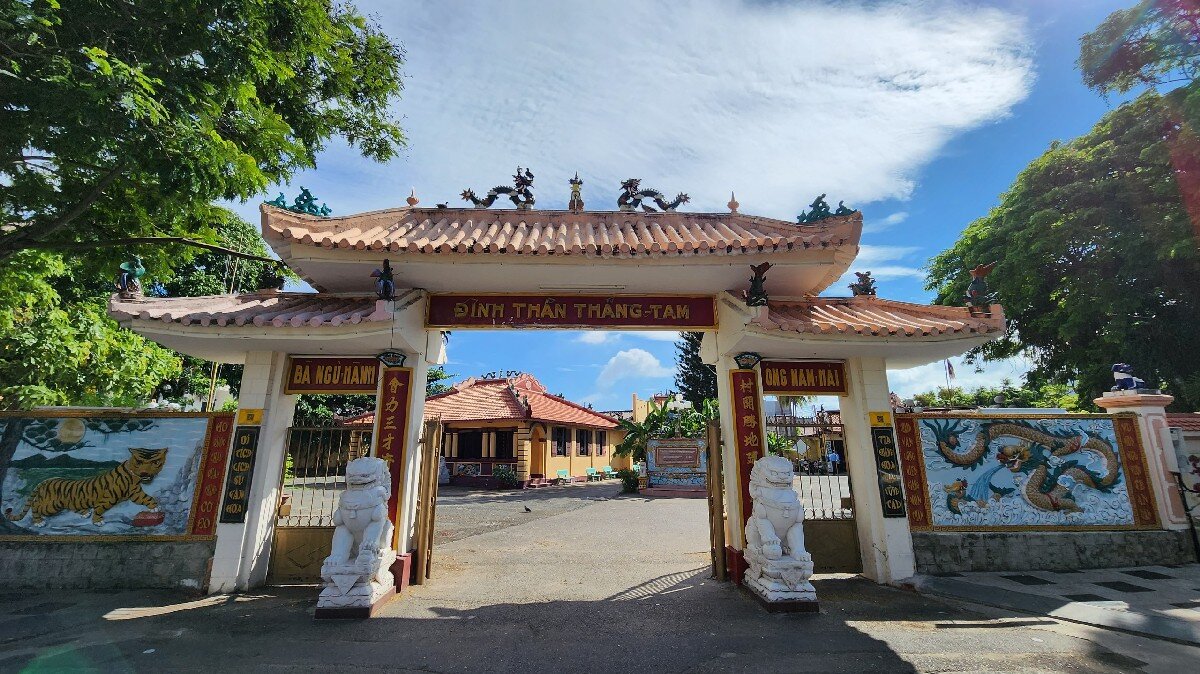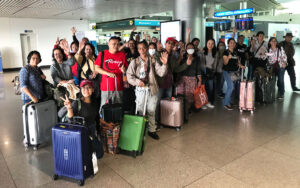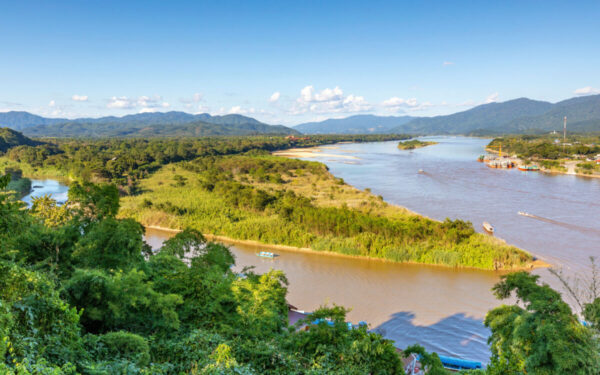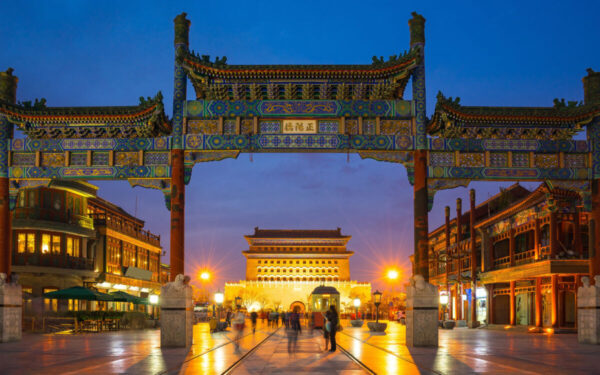Thang Tam Temple (Whale Temple) is a must-visit cultural tourist attraction that no visitor should miss when visiting Vung Tau Vietnam. A visit to this temple provides a fascinating look into the vibrant traditions of this beautiful Vung Tau beach city, and a peek into the rich history of Vietnam as well. So, what are we waiting for? Let’s head on a journey with Asia Legend Travel to Thang Tam Temple (Whale Temple) and discover all the special things it has in store!
Overview of Thang Tam Temple (Whale Temple)
Location: 77A Hoang Hoa Tham Street, Thang Tam ward, Vung Tau city, Ba Ria Vung Tau province, Vietnam.
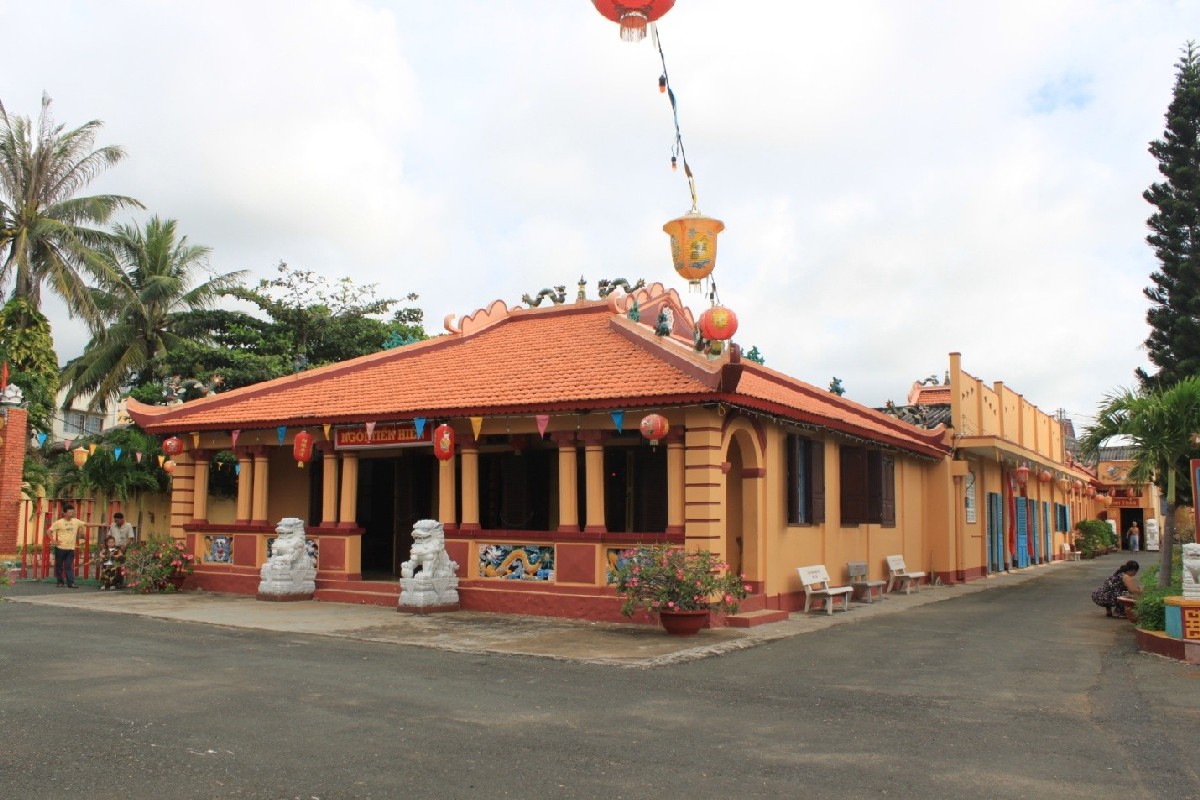
The Thang Tam Temple (Whale Temple), is a significant cultural and historical site situated on Hoang Hoa Tham Street, Thang Tam ward, Vung Tau City, close to Vung Tau’s Back Beach. This site is a complex comprising three landmarks: the Thang Tam Temple, the Ba Ngu Hanh Temple (or Temple of the Five Elements), and the Ca Ong Mausoleum (or the Whale Tomb). The site is believed to feature an “án sơn tụ thủy” position, which means it’s at the foot of a mountain and a gathering place of water. This destination is a must-visit for anyone touring Vung Tau.
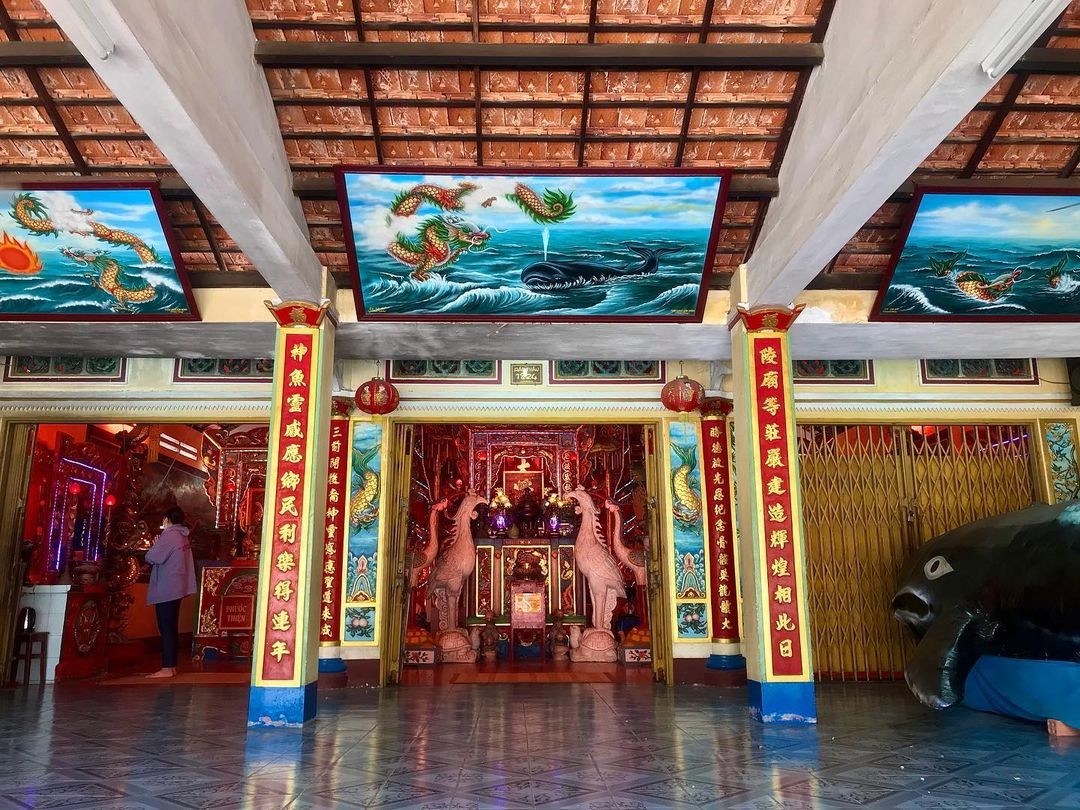
The temple sits on a large plot surrounded by shade trees such as tamarind and coconut, alongside bonsai plants, creating a green and fresh ambiance. Each year, it attracts many visitors from near and far who come to pray for blessings. Particularly, seafarers, including fishermen and sailors, often frequent the temple to pray for peace and well-being for themselves and their families.
Significantly, this historical complex also contains 13 royal sealed scrolls from the Nguyen Dynasty. The deities ordained are all worshiped at the Thang Tam Temple Vung Tau (Whale Temple Vung Tau). These deities, respected as the patron saints of the villagers, are believed to have aided the nation and saved the residents.
How to Get to Thang Tam Temple (Whale Temple)
From Front Beach Park in Vung Tau, proceed to Truong Cong Dinh Street. At the intersection, turn right onto Hoang Hoa Tham Street. Alternatively, from Vung Tau Front Beach, follow Ha Long Street to Back Beach (Thuy Van Beach). Opposite the Flagpole Park, turn onto Hoang Hoa Tham Street. Proceed a little further to reach the Thang Tam Temple Vietnam (Whale Temple).
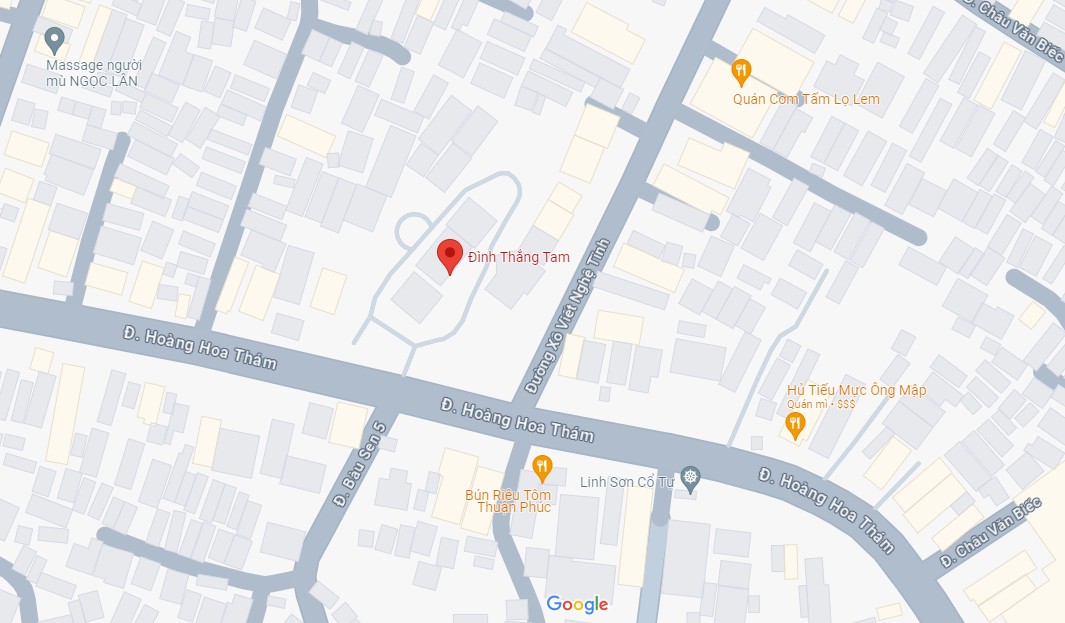
If you don’t have access to an online map, you can ask any local in Vung Tau for directions. Remember to dress modestly when visiting this sacred site.
The Legends of Thang Tam Temple (Whale Temple)
The Thang Tam Temple (Whale Temple) was first built in 1802 during the reign of King Minh Mang. Initially, it was a simple structure made of bamboo and leaves. However, due to community contributions, it was upgraded to a tiled roof structure by 1835. Further renovations were made in 1964, resulting in the robust, complete structure we see today.

Historical records indicate that merchants in the Ben Nghe River area frequently faced pirate attacks. To resolve this, King Gia Long assigned three captains for protection. By 1822, the king acknowledged these captains by giving them stewardship of three villages. The first village, Thang Nhat (the first boat), was managed by Mr. Pham Van Dinh. The second, Thang Nhi (the second boat), was overseen by Mr. Le Van Loc. The third, Thang Ba (the third boat), was under the care of Mr. Ngo Van Huyen. After their deaths, the king had a temple built in Vung Tau to honor their contributions to the region.
Structure of Thang Tam Temple (Whale Temple)
Let’s delve into more detail about the structure of the Thang Tam Temple (Whale Temple) complex.
Tam Quan Gate (The Three-Gate Entrance)
Upon arriving at the Thang Tam Temple (Whale Temple), you’ll first notice the grand and solemn Tam Quan gate. This gate features a tiled roof with two layers of yin and yang tiles. Along the adjacent walls, you’ll find bas-reliefs depicting traditional images of dragons, tigers, the eight immortals crossing the sea, and carps transforming into dragons.

Thang Tam Temple
Thang Tam Temple is a prime example of Southern Vietnam’s ancient architectural style commonly seen in communal houses. The temple comprises four interconnected structures: Tien Hien, the Hall, Main House (Dinh Trung), and the Martial Arts stage, all linked by a side aisle. The roof, decorated with Yin and Yang tiles, showcases ‘Two Dragons adoring the Moon’ as its focal point.
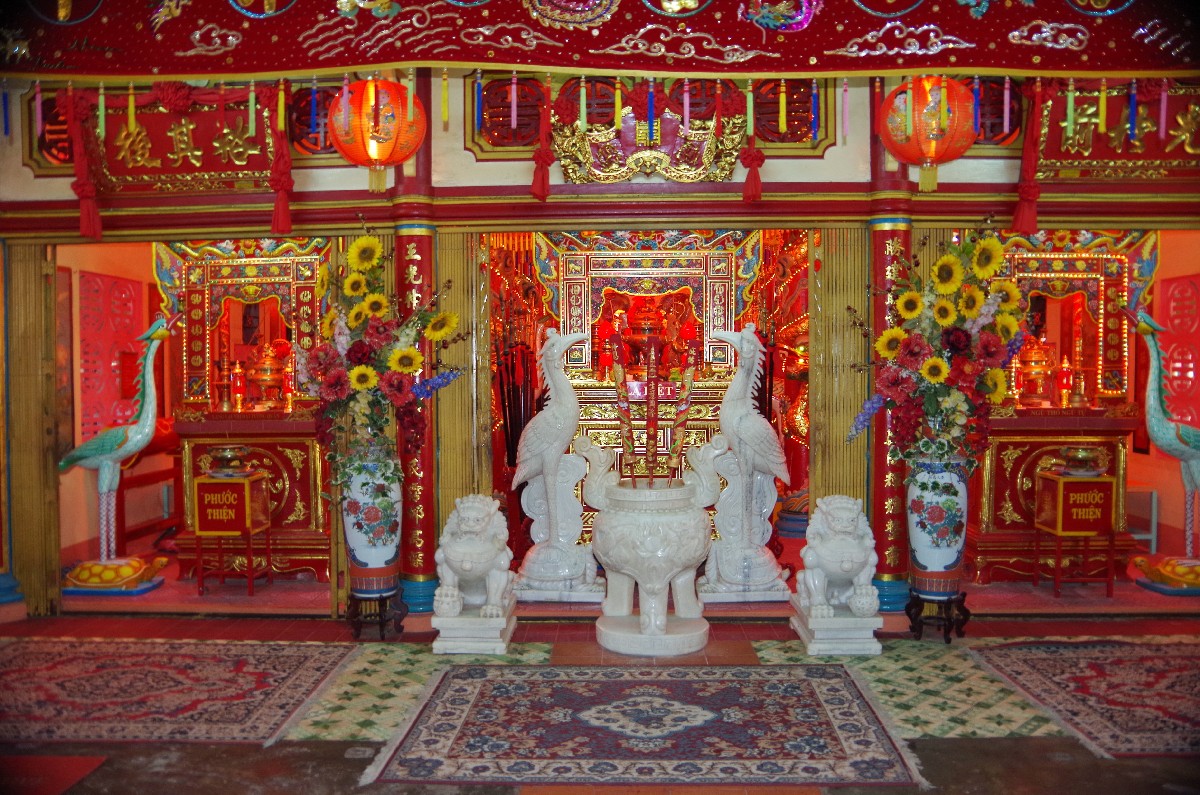
Inside Tien Hien, there are four altars dedicated to the Village God: Tho Cong, Tien Hien, Hau Hien, and Tien Vang – Hau Vang. The Hall is used as a meeting place for village members. The Main House, which has been reconstructed with reinforced concrete, contains a horizontal lacquered board inscribed in both Chinese and Vietnamese, along with ten altars.
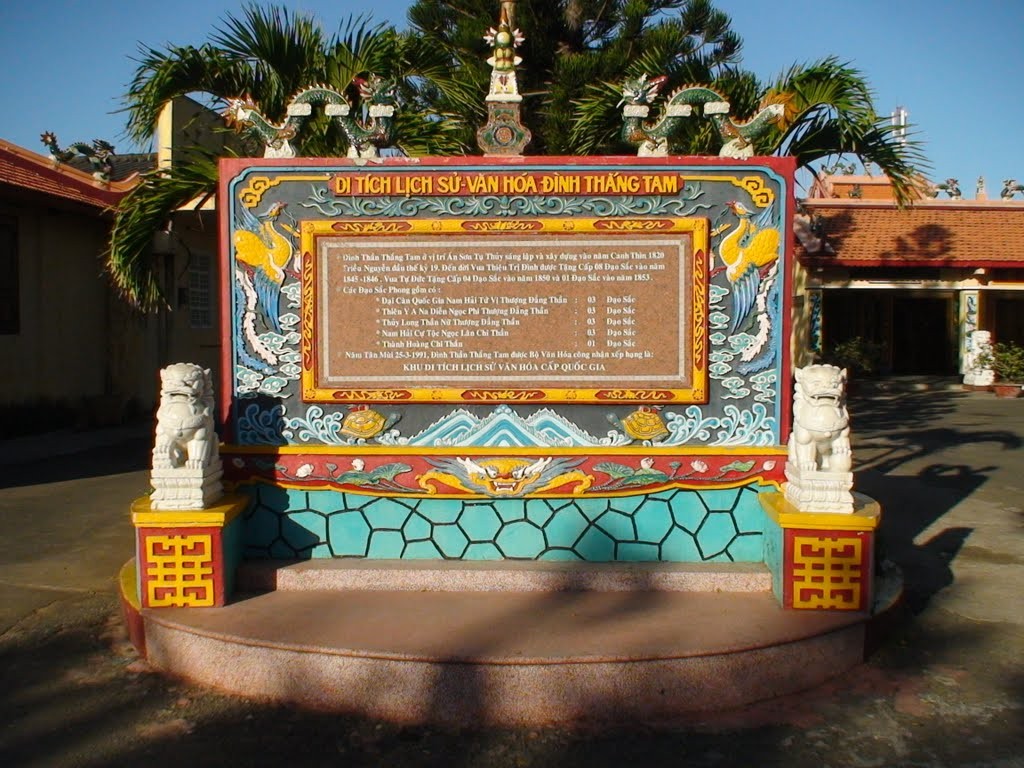
Thang Tam Temple also houses thirteen royal edicts from the Nguyen Dynasty for the deities worshiped in the communal house. These deities include Than Nong, Thien Y A Na, Ngu Duc, Thanh Phi, Hau Hien, Hoi Dong, Phu An – Cao Cac, Thien Su, Ngu Tho, and Ngu Tu – Tien Hien. The Martial Arts stage is used for performances of Tuong and Boi singing during temple ceremonies.
Ba Ngu Hanh Temple (Temple of the Five Elements)
Upon entering the relic area, you will find the Ba Ngu Hanh Temple (Temple of the Five Elements) on your left. This Vietnamese temple is dedicated to the five female goddesses: Metal, Wood, Water, Fire, and Earth. It also honors national protectors, the Chinese warriors known for their loyalty and righteousness, who are always ready to aid seafarers in distress, such as Guan Gong, and the village gods.
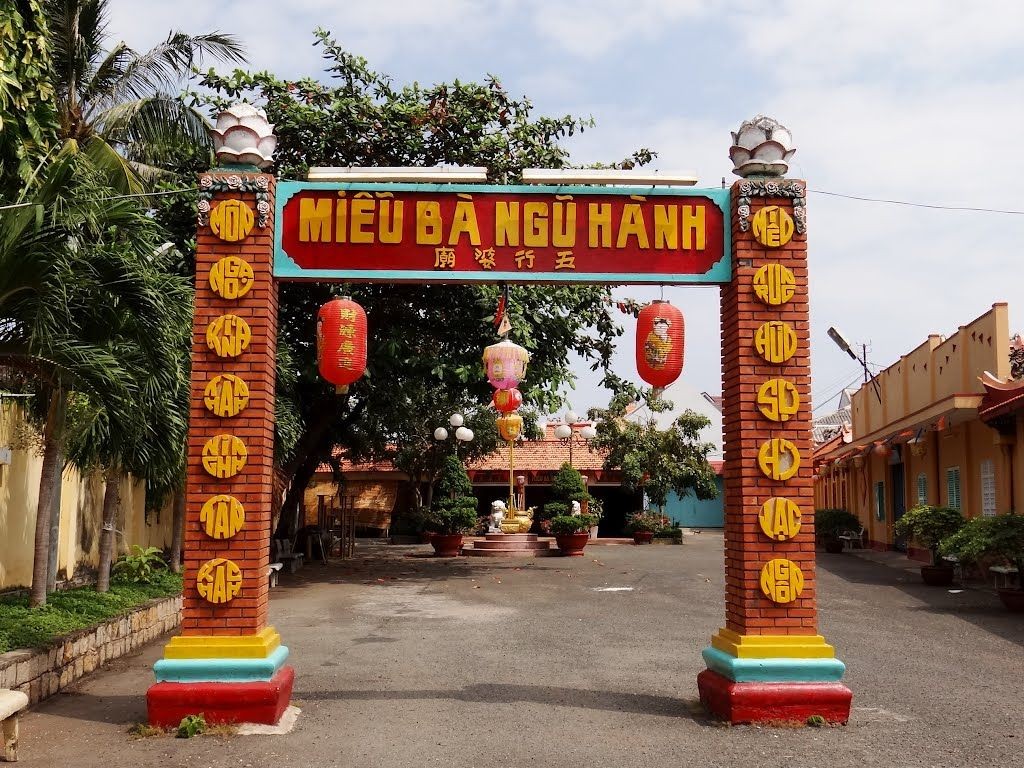
About the architecture, the Ba Ngu Hanh Temple is built in a style that features one compartment and two wings. Its roof boasts intricate craftsmanship, depicting ‘two dragons adoring the moon’.
Ca Ong Mausoleum (Whale Tomb)
Simultaneously with the construction of the Ba Ngu Hanh Temple, the Ca Ong Mausoleum was established, situated to the right of the historical site. This mausoleum houses the skeleton of a giant whale (Ca Ong), measuring 12m in length, which was discovered by Vung Tau fishermen approximately 100 years ago.
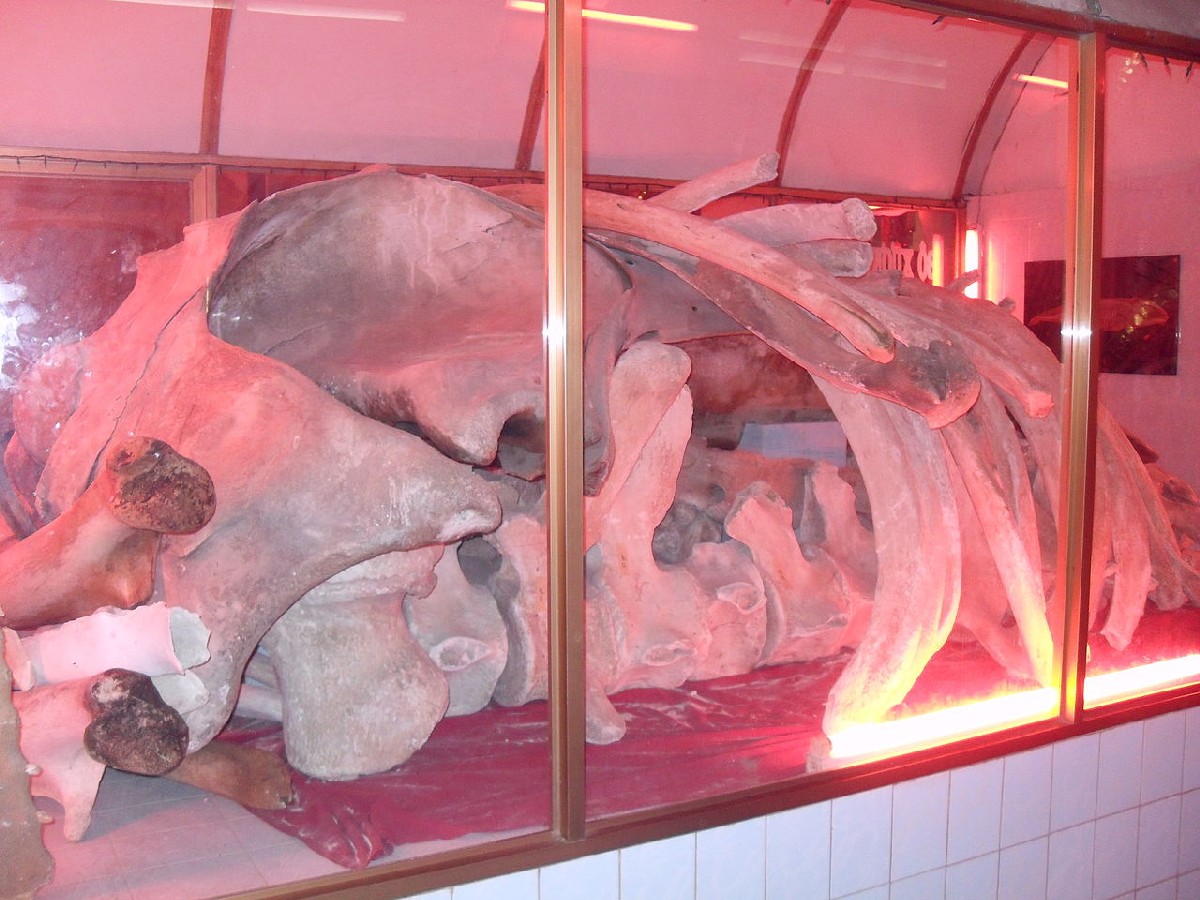
The temple showcases ancient architecture and features three large glass cabinets that display the whale’s bones, corresponding to three altars. There are also two altars at the far left and far right: one for the Ba Sau (Turtle God) and one for the ancestor of local traditional music.
Festivals of Thang Tam Temple (Whale Temple)
The Thang Tam Temple (Whale Temple), hosts three major events every year. These festivals are the Peace Praying Festival from the 17th to 20th of the 2nd lunar month, the Nghinh Ong Festival from the 16th to 18th of the 8th lunar month, and the Mieu Ba Festival from the 16th to 18th of the 10th lunar month.

These traditional festivals, especially the Nghinh Ong Festival, are significant to Vung Tau’s culture and attract tourists from all over. Despite being celebrated for many generations, the festivals at Thang Tam Temple have preserved their traditional rituals and features, which include folk games, lion dances, and ‘tuong’ performances.
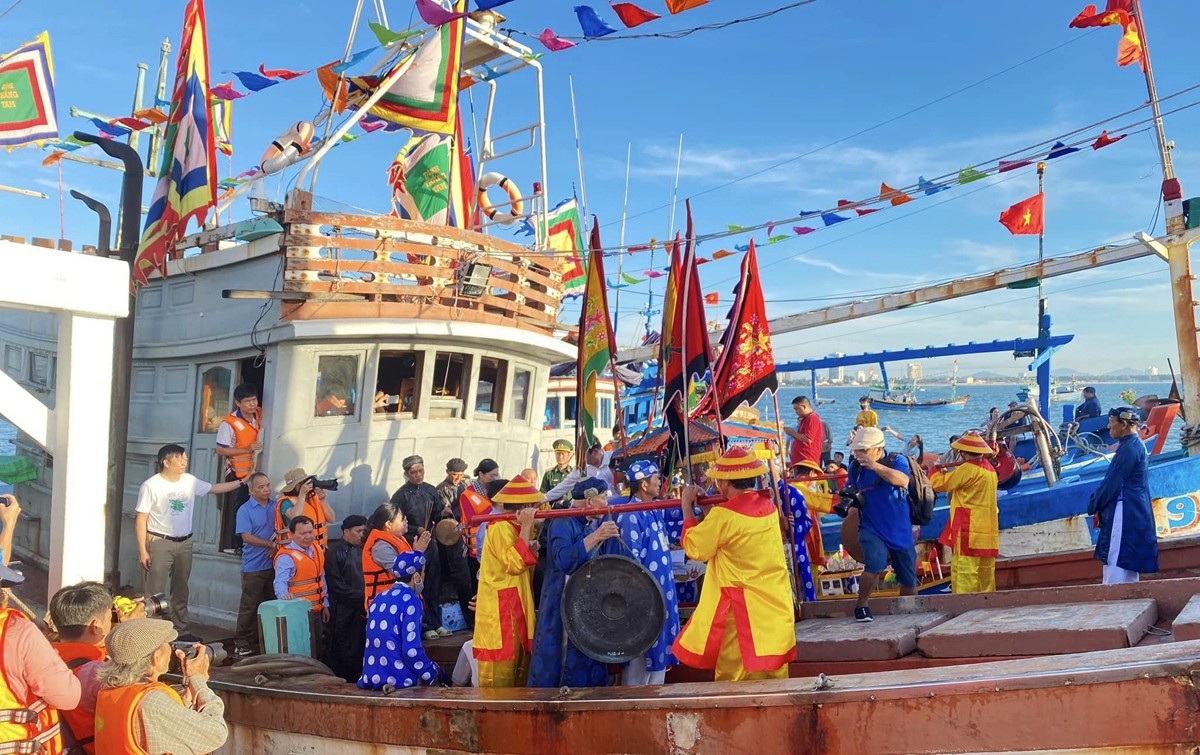
In recent years, the Vung Tau City authorities have enhanced the Nghinh Ong Festival, expanding cultural activities, sports, and art programs. These improvements create a dynamic atmosphere, fostering enjoyment for the locals and promoting the festival’s value. This approach also aims to attract tourists and boost local tourism.
Practical Tips for Visitors
Here are some practical tips to make your visit to Thang Tam Temple (Whale Temple) enjoyable.
- Wear simple clothes when you go to places like Thang Tam Temple.
- Be quiet and respectful. Don’t leave trash and follow the temple’s rules.
- Make sure to check Vung Tau weather before your trip.
- Taking part in the Thang Tam Temple’s festival is fun.
- Consider going on a Vung Tau tour with Asia Legend Travel. They can teach you more about Thang Tam Temple and help plan your visit.
- If you have time, try to visit the nearby Vung Tau attractions like Big Mountain Vung Tau, Small Mountain Vung Tau, Hon Ba Island, Nghinh Phong Cape (Cape Saint James), White Palace Vung Tau, Christ of Vung Tau, and so on.
In conclusion, Thang Tam Temple (Whale Temple) is truly a must-visit site in Vung Tau. It’s not just a place of spiritual significance where you and your family can pray for luck and peace. It’s also a cultural hotspot that offers visitors an insightful view into Vung Tau’s dynamic and vibrant culture. Hopefully, this information will enrich your experience on future trips. Enjoy your time in Vung Tau!
